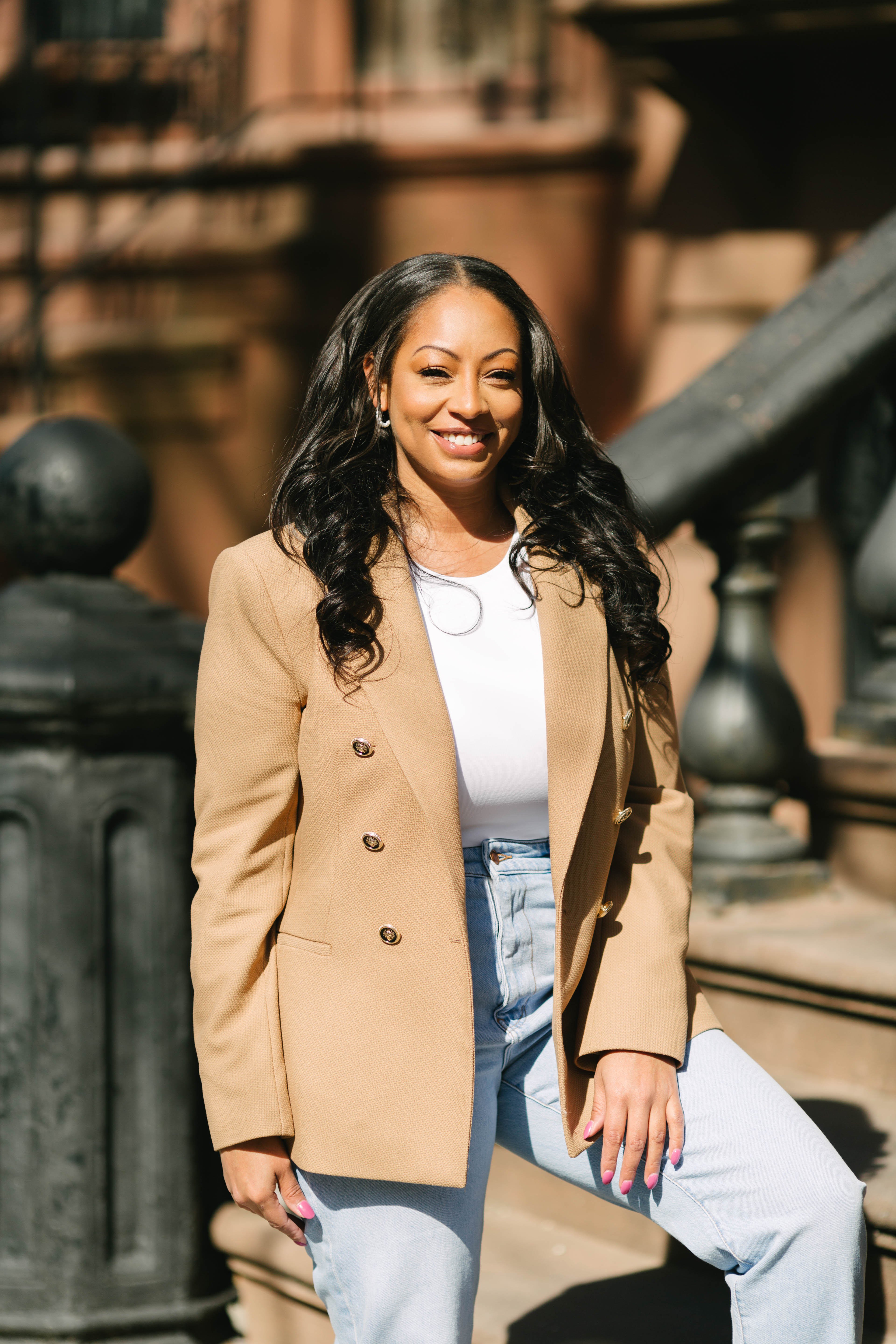Eneia White’s journey to becoming an interior designer started on a small scale: working with dollhouses. After dabbling with the idea of becoming an elementary school teacher or a fashion designer in college, the combination of her miniatures hobby and the rising popularity of HGTV helped steer her toward a career in life-sized home makeovers.
“While I was working on my dollhouse, I thought, ‘That’d be cool if someone paid you to do a house,” the New York–based designer tells Kaitlin Petersen on the latest episode of Business of Home’s podcast, Trade Tales. “I really didn’t even know it was a career.”
White studied design at the Art Institute of Washington, where she learned about how to pair the technical side of the design process, like codes and regulations, with storytelling and creativity. After graduation, she packed up her Hyundai Accent and moved to California, taking a job first at a company that did part design, part staging, and ultimately working for a high-end full-service firm. The latter role gave her complete creative freedom, and it also taught her to tap into her technical knowledge and run a project on her own. “You were the lead and only designer,” White recalls. “If you don’t know something … there’s no blaming your junior designer or assistant—it’s just you.”
The job gave her the confidence to go out on her own. If she could run a project for someone else, she reasoned, why not try it for herself? “I just got to the point where I know that my work ethic is my work ethic, and that is very valuable to any company,” she says. “I thought, This is the time.” Back in New York, she launched her firm, Eneia White Interiors, in 2018, and started to make a name for herself documenting her life as an interior designer on Instagram while managing a full plate of projects by herself. It was exhausting—and not necessarily very profitable—but for White, staying busy felt like the key to success. When the pandemic hit and the designer was forced to slow down, she embraced the opportunity to sit back and reevaluate her business practices.
In this week’s episode, White talks about learning to charge what she’s worth, designing sales tools like custom business proposals to dazzle her clients, and navigating the share-everything mentality of social media as her clientele shifts.
Listen to the episode and check out some takeaways below. If you like what you hear, subscribe on Apple Podcasts or Spotify. This episode was sponsored by BuildLane and Chelsea House.
PUTTING A PEN TO PAPER
White’s busy life came to a halt last spring, as the pandemic stopped the design industry—and everything else in New York—in its tracks. For the designer, that reprieve from her daily hustle gave her the space to rethink her career and become more strategic about the projects she took on. An admitted people pleaser, White knew that she didn’t want to be in positions where clients said no, so she brainstormed solutions to the reasons clients would push back in her projects. The exercise was a springboard to creating a Disney-like experience filled with wonder for clients, starting with a 10-page design proposal filled with storytelling elements about White and her vision; technical drawings (on a pale pink background to make them more accessible); and even a quote by Picasso to underscore how much she values artistry in design—a way to show the client what the journey of a design project will be like, which culminates in the budget. So far, it’s working: “I stopped getting pushback, and there’s no more talking me down,” says White. “Now I’m solving for what I feel my personality can handle.”
GROWING IN SIZE AND ACCOUNTABILITY
As White was able to attract a luxury clientele with higher budgets, she also hired her first full-time employee in December: Jessica Chiappardi. It was an important step for a host of expected reasons, like sharing the firm’s workload, but bringing on a team member also pushed White to hold herself accountable. “I’ve only ever had to look out for myself, so if I take on a project for less than what I should be charging, I suffer, but that’s where it ends,” she says of life as a solo practitioner. “[Now], I can’t give away things for free anymore. Our markup is our markup is our markup, and that’s fair to myself, that’s fair to the people I ask to work with me.”
PRESERVING ORIGINALITY IN THE INSTAGRAM ERA
Before the pandemic, White constantly used her Instagram to host live videos of herself sketching or to showcase how she had used retail products in a unique light. But as her business has shifted to bigger projects, longer lead times, and higher-end clients, her social media strategy has had to adjust. “Now, I can't really show the custom coffee table I just sketched out, because the client hasn't seen it or their house framing is still going up,” says White. “Just to keep that relationship safe, I can't really show everything. We do pride ourselves in creating original themes, so if I know I’m not going to photograph [a project] for another year and a half, it really doesn’t benefit me to show it for someone else to maybe copy or be inspired by the idea.”
Homepage photo: Eneia White | Courtesy of Nick Glimenakis




























